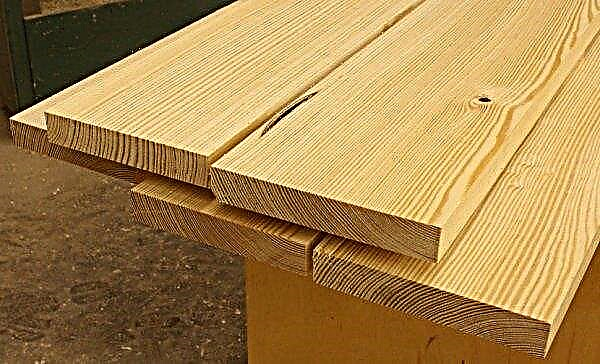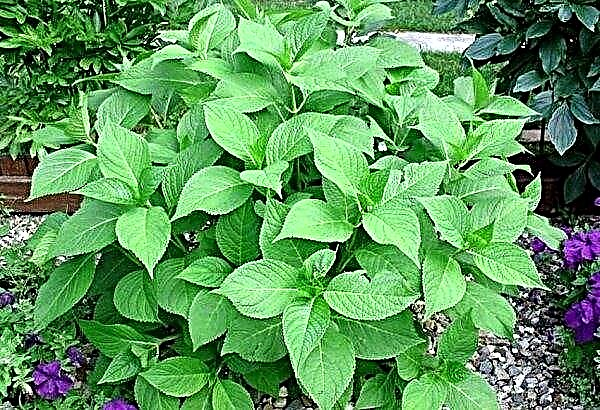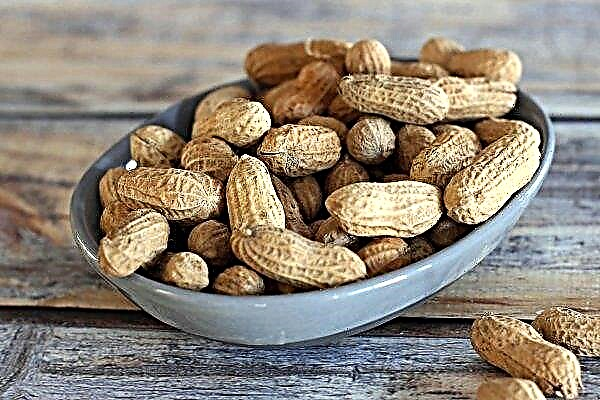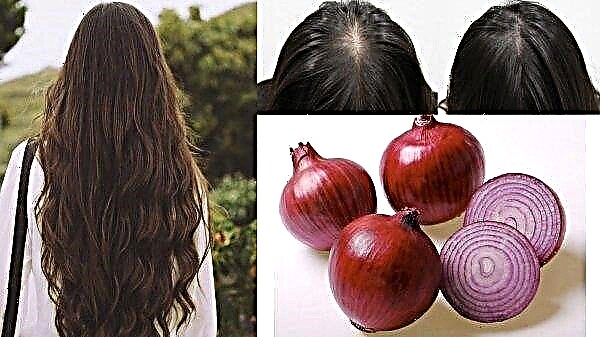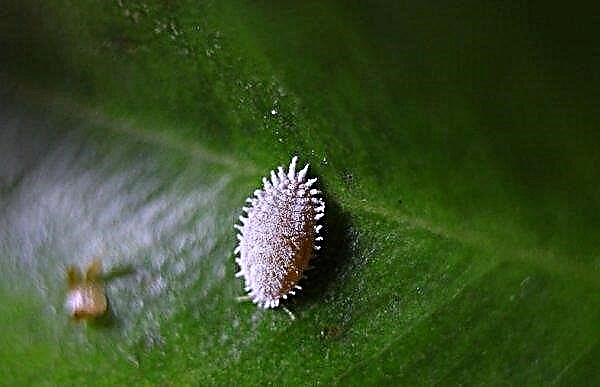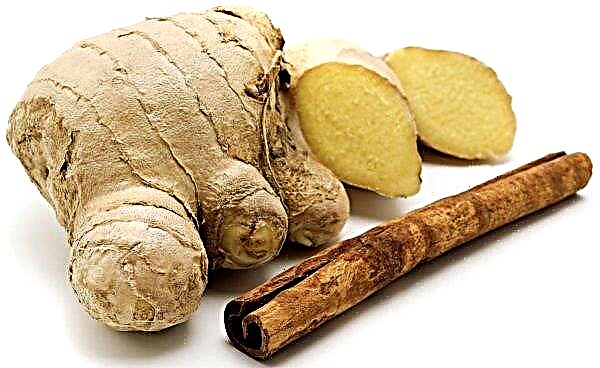No matter how beautiful, fragrant and juicy the cucumber may be, all these qualities do not matter if they are combined with the bitter taste of the fruit. The article will answer the question why cucumbers grown in a greenhouse are bitter, and how to fix this.
Why cucumbers in the greenhouse are bitter
In fact, both greenhouse cucumbers and open ground can be bitter. But greenhouse cucumbers often suffer from this drawback, since for vegetables that grow in a greenhouse, it is more difficult to correctly carry out the whole complex of agricultural practices. The reason for the appearance of bitterness in the fruit is an increased content of complex nitrogen-free organic compounds from glycosides called cucurbitacins.
Did you know? Studies have shown that cucurbitin is useful for the work of the heart and gastrointestinal tract and even has an antitumor effect. However, official medicine focuses on the biological activity of cucurbitacin, and not the bitter cucumbers themselves. The properties of this substance are still not fully understood, but, perhaps, in the future, drugs based on it will be developed.
Their production is regulated by two genes:
- dominant (responsive to stress due to inappropriate growing conditions, which causes an increase in the level of cucurbitacins);
- recessive (suppressing the production of substances under conditions comfortable for the plant).

Factors contributing to an increase in the concentration of bitter substances are:
- incorrect irrigation regime (waterlogged or dry soil, insufficiently warm water, irregular watering);
- temperature differences;
- unsuitable soil;
- lack of fertilizer;
- excessive or insufficient lighting intensity;
- untimely harvesting;
- unsuccessful seed;
- improper bush formation (twisted stems);
- low humidity;
- the use of the same varieties from year to year;
- genetic properties of the variety.
What to do and how to remove bitterness from cucumbers
Having found out what can provoke a bitter taste of cucumbers, we will consider how to deal with this drawback.
If you already have cucumbers with bitterness, you can take the following measures:
- Cucurbitacins are found mainly in the skin and stalk of cucumberso it’s easiest to cut off the skin. The disadvantage of this method is that, together with the skin, most of the fiber and vitamins will go away.
- Gherkins are usually the most prone to bitterness.which are impractical to peel due to their small size. In this case, they are usually canned. The way to eliminate bitterness by heat treatment is also suitable for large varieties.
- Soaking cucumbers in cold water for several hours (or better for a day) is also able to reduce the unpleasant aftertaste. Before soaking, you need to cut off the edges of the fruit on both sides.
- Rubbing a slice. Wash the cucumber under running water, cut off the wider edge (on which the stem grew), and then rub the cut off with this tail. Together with the resulting white foam, bitterness will come out.
Video: how to get rid of bitterness in cucumbers
How to prevent the appearance of bitterness of cucumbers
The above methods, although they help to remove bitterness, are still not an ideal way out, especially for those who prefer pickled salads from fresh cucumbers, or cannot spend time soaking and rubbing the fruit. This is why it is best to prevent the appearance of a bitter taste in advance. To do this, you need to take care of creating conditions that are comfortable for the plant.
Proper fertilization
The first rule when applying fertilizing is not to spare funds for high-quality fertilizers and do not forget to make them on time. At the same time, an excess of fertilizers will also not affect the vegetable in the best way. Greenhouse cucumbers require more frequent top dressing (once a week) than growing in open ground, which is enough fertilizer every 10-14 days. Ready-made mineral complexes can be used, combining them with such top dressings prepared at home:
Ready-made mineral complexes can be used, combining them with such top dressings prepared at home:
- Infusion of fermented nettle mixed with ash. For infusion, 2 buckets of nettles are placed in a 50-liter barrel, which is poured with water and placed in the sun. For the fermentation process, add a little sour compote or last year's jam. After 3-4 days, the infusion is ready, you just need to add wood ash to it at the rate of 1 glass per 10 liters of infusion.
- Spraying with a solution of boric acid (10 g per 10 l of water).
- Watering the bushes with fermented chicken droppings. To get such a solution, dry litter is poured with water in a proportion of 1:20 and put in a dark place for 2-3 weeks, then filtered.
Important! Cucumber does not tolerate potassium chloride, fresh manure and excessive amounts of nitrogenous fertilizers.
Watering mode
Cucumber loves moisture, but pouring cold water from a hose will be too much stress for this plant, which has not forgotten about its tropical origin. And stress, as already mentioned, leads to the appearance of bitterness in the fruits, therefore, when watering, you need to remember the following:
And stress, as already mentioned, leads to the appearance of bitterness in the fruits, therefore, when watering, you need to remember the following:
- water should be warm;
- the frequency depends on weather conditions and the nature of the soil (dry sandy soil requires daily irrigation, and frequent rains reduce the need for watering), but the average frequency is once every 3 days during flowering and every other day during fruiting;
- if due to circumstances it is not possible to pay enough attention to watering the cucumber plantings, it is recommended to mulch the soil with sawdust or straw, this will help to save moisture and protect the roots of the bushes;
- it is better to water early in the morning or in the evening;
- in the heat, you need to spray the leaves.
Optimal temperature in the greenhouse
It is best to make a greenhouse heated (using a boiler, heating main, or infrared heaters). The air temperature in the greenhouse should be at least + 20 ° C during the day and + 18 ° C at night. During the fruiting period, it is better to maintain the temperature at + 28 ° C for more active fruit loading.
As already mentioned, cucumbers do not tolerate the temperature difference, so you need to ventilate the greenhouse only when the temperature inside and outside the greenhouse is about the same. In extreme heat, the material of greenhouses, whether glass or film, needs to be whitened with a chalk solution (200 g of chalk per 10 l of water).
Sunlight
Cretaceous solution is used not only to reduce the temperature in the greenhouse, but also for shading. Too intense lighting, characteristic of the summer months, negatively affects the quality of the fruit and leads to the fact that the leaves of cucumbers burn. For shielding greenhouses, you can also use special curtain systems made of dense fabrics that reflect the sun's rays and do not interfere with air exchange.
Shoot care
It is important to form the cucumber bush correctly. This is especially true for cucumbers from greenhouses, otherwise the overgrown bushes will not receive enough sunlight. In the care of the shoots, it is important to consider which variety the cucumber belongs to. Some modern compact hybrids do not require traumatic pinching, for them it is enough to remove the lower leaves. Variegated cucumbers, in contrast, need regular thinning of the shoots.
Important! When forming a bush, it is necessary to use only a disinfected tool. Removing leaves, you can not leave stumps to avoid rotting.
Form bushes as follows:
- they are tied to a wooden support (trellis) 1.5–2 m high, leaving the top of the bush free;
- periodically remove leaves that touch the ground;
- stepchild (remove lateral shoots that have reached 3-5 cm).

Useful tips for growing cucumbers
Growing cucumbers has its own subtleties and nuances, which are understood by gardeners as they gain experience. Listed below are some points that may be useful for beginner gardeners.
- Sometimes cucumbers take an irregular shape and grow in the form of bottles. In such fruits, the upper part (from the side of the flower) thickens. This is often caused by improper care and an excess of the hormone auxin, which is formed after pollination of the flower, so most of all cucumbers are of non-standard shape among parthenocarpic varieties that do not require pollination. Such varieties should be protected from pollination by bees, that is, be in the greenhouse. Bee pollinated varieties, on the contrary, need high-quality pollination, since auxin deficiency can also lead to an uneven thickening of the fetus.
- So that there are no voids inside the cucumbers, you need to provide the plant with fertilizing potassium, phosphorus and calcium and do not overdo it with compost and urea. For greenhouse cucumbers, special attention is paid to airing and fertilizers from wood ash.
- The best material for greenhouses are hydrophobic heat-holding polymers. In second place is glass. Polyethylene is prone to condensation, which in cool weather at the beginning of autumn can lead to a sharp drop in productivity.
- The greenhouse is airedopening the windows, but leaving the doors closed to prevent drafts.
- The density of planting bushes in the greenhouse should be lessthan in open ground, and make up 2.5–3 bushes per 1 sq. km. m
Varieties of cucumbers without bitterness
Parthenocarpic or self-pollinated hybrids are most suitable for growing in greenhouses. Every year, breeders are producing an increasing number of new hybrids, which, in addition to excellent taste and high yields, are also characterized by the absence of bitterness (due to the lack of a gene that accumulates cucurbitacin).
The most popular of these varieties:
The bitter taste of cucumbers is an unpleasant surprise for the gardener, but it can be avoided if you adhere to the above rules for caring for plants.
Did you know? In Europe, cucumbers began to be cultivated everywhere in the 9th century, during the time of Charlemagne, who in his "Capitulation of Manors" ordered that Gurken be in his possessions and monastery gardens (German «cucumbers»).
If bitter cucumbers have already come to your table, you can use the methods to reduce the bitter taste described in the article.



